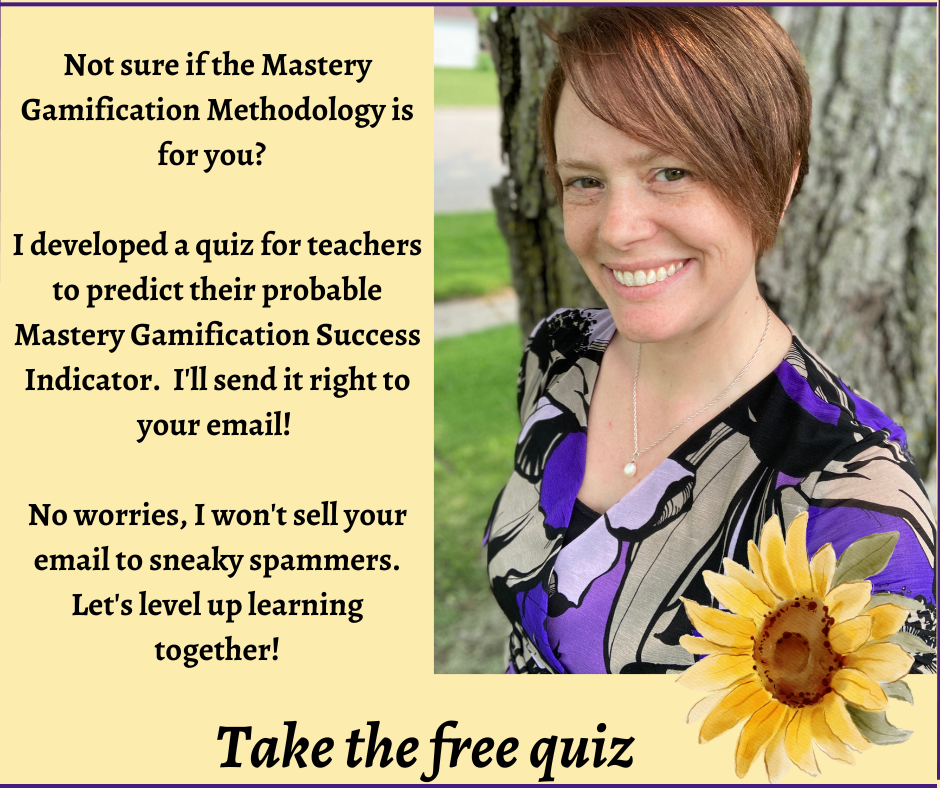What is Apathetic for Students?
Teachers, have you ever taught an apathetic student? Have you ever succumbed to apathy yourself? Personally, apathy in students is my biggest pet peeve. I see apathetic students and it just feels like I’m watching them shoot themselves in the foot. The dictionary defines apathy as a lack of concern or interest. Having no concern or interest in school means the student will achieve no goals. With so much hanging on the successful completion of the high school degree, why are some students apathetic about their education? How can we encourage students to care about their education? What is apathetic for students? And why is it a thing?
You Know the Student
You know as soon as you try to talk to the student. Maybe he puts his head down on the desk with his hood on. Maybe he stares off into space. Probably he just shrugs when you ask him direct questions. This is him, the apathetic student. In my Mastery Gamification Methodology, we talk about this state of being in “spectator mode.” Inspired by certain video games, if you are in a battle with a team and your avatar is killed but the battle is continuing, you can choose spectator mode. This is a mode where you can fly around and see everything but can no longer interact with the scene.
Our apathetic students seem to have chosen spectator mode. They can see and hear and they are in school, but they are unaffected by both positive and negative stimuli. They don’t seem affected by consequences – positive or negative. This can be very frustrating because it’s like hitting a wall whenever a teacher tries to interact with a student. What causes this state of being?
The Research
In 1967, Professor Martin Seligman did an experiment with dogs. He contained dogs in inescapable cages and gave them electrical shocks. At first, the dogs tried to escape the shocks but there was no way to get free. Seligman found that, after enough time with the shocks and no way to escape, the dogs eventually stopped trying to escape and just sat and waited for the shocks to stop. This reaction continued even after a way of escape was provided to the dogs. They found that the dogs did not try to use the escape, even when it was there. Seligman termed this reaction as “learned helplessness.” The conclusion was that enough negative stimuli over enough time taught the dogs that they were helpless so they stopped trying to escape. They repeated the study with humans but instead of electrical shocks for the humans, they used painfully loud noises.
Citation: Maier, S. F., & Seligman, M. E. P. (1976). Learned Helplessness: Theory and Evidence. Journal of Experimental Psychology General, 105, 3-46.
But then, several years later, Seligman did another study where he discovered that the dogs and humans in his study had not learned helplessness but rather this was the default reaction for living things who realize a situation is painful and they have no control over what is happening. They simply shut down and wait it out. Seligman discovered that his subjects could be taught or encouraged to stop the painful stimuli if they simply believed that they had some control over the outcome. The painful immediate situation did not have to lead to this apathetic response if the subject had a level of control or thought they had a level of control.
Maier, S. F., & Seligman, M. E. P. (2016). Learned Helplessness at 50: Insights from Neuroscience. Psychological Review.
How Does This Help?
Perhaps our apathetic students are in this default “learned helplessness” mode. School can be very challenging for students, especially if they do not have adequate support at home to do well in school. A student who continues to fail at academic tasks year after year can interpret this as prolonged negative stimuli. It may be the student equivalent to the shocks given to dogs in cages.
So how do we help these students? While it can be a long journey, there are several things we can do as teachers. Most students like this will not respond to detention or other forms of punishment. While the first instinct may be to try to punish the student for disrespect, this will be seen as yet another negative stimulus in their life and make it even harder to reach them.
The first thing we should do as teachers is to ask the school counselor if they would recommend the student to get a therapist. It is quite likely that these students don’t have the ideal home life and could be helped by having a trusted therapist to talk to. Then, according to the Seligman studies, we need to give them some control over their situation. If students are able to truly believe that they have some control, they will be better equipped to handle academic challenges as they come along.
How?
My Mastery Gamification Methodology uses the power of narrative and games to empower students to make decisions about their own education. It puts students in more control of their education and students rise to meet the expectations. If you are interested in learning more, I’d love to connect with you! Join my Facebook group and send me a message! I would love to connect with other teachers who want to empower their students to own their own education. Remember, empowered teachers empower students and empowered students learn. See you at the next blog time!
